In Wyoming, it is possible to spot 8 different species of Hawks. These are:
- Red-Tailed Hawk
- Northern Harrier
- Ferruginous Hawk
- Swainson’s Hawk
- Sharp-shinned Hawk
- Cooper’s Hawk
- Rough-legged Hawk
- Northern Goshawk
Want to learn more? This book on the Birds of Prey of North America is a fantastic read!
As the least populous state in the union, it should come as no surprise that Wyoming
hosts some of the richest natural landscapes in the country.
These lands are rife with all types of birds, including our glorious hunters, in the North American hawk family.
Check out this list to see the where, when, and how on the breeds that either frequent The Equality State or call it home all year-round.
Want to attract birds of prey to your yard? Take a look at our article!
What Hawks can be seen in Wyoming?
1. Red-Tailed Hawk
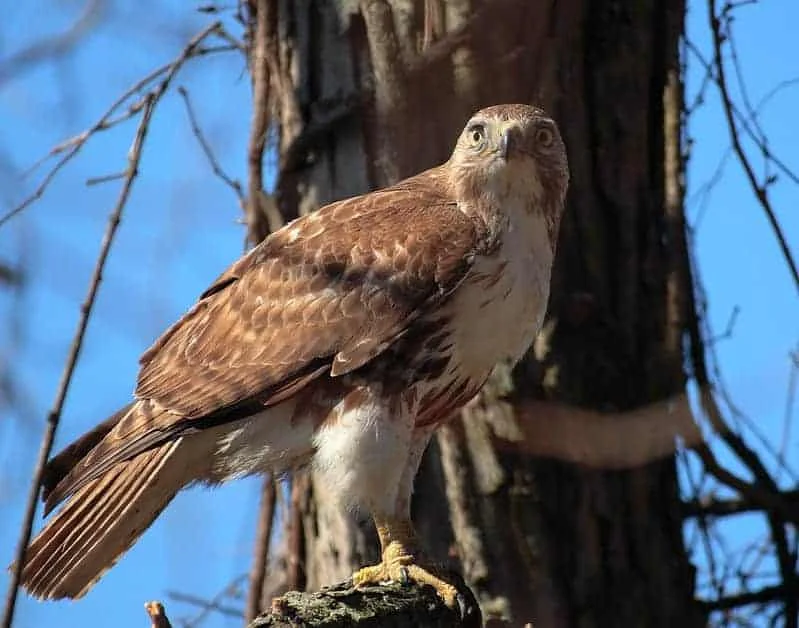
The red-tailed hawk breeds throughout Canada and some of the northernmost US states, so expect to see its Wyoming population highest during the winter.
They are highly adaptable to both woodland living and existing beside human progress, often lurking near highways and neighborhoods and camping out in man-made structures.
Ideally, the red-tailed hawk will hunt near open grasslands that border the forest’s edge like most raptors.
Look for the red-orange feathers that give this bird its name, as well as its considerable size compared to most other raptors, which places it in the upper percentile among its kind.
Elsewhere the raptor is usually a combination of dark browns on the back and light brown and white on the stomach, with morphs occasionally all brown or dark gray.
2. Northern Harrier
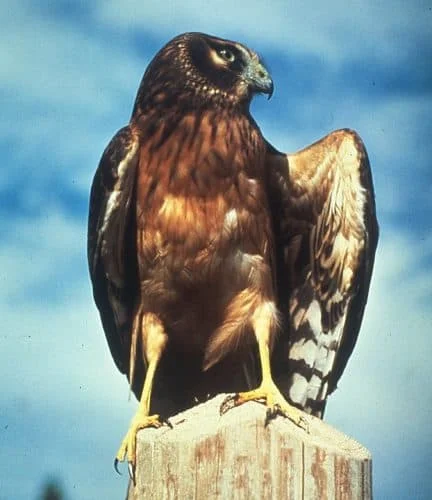
The northern harrier is so-named because it originates in the far north of Canada, and because it ‘harries’ prey by soaring above feeding grounds instead of dive-bombing it from a perch like most other raptors.
It is a distinct hawk, bearing features that are closer to an owl’s than that of its kin, with a large round head and a ring of hardened feathers encircling its eyes and beak-like the owl’s faceplate.
Their coloring varies between light and dark grey, or light and dark brown on the outside, with lighter versions mixed with white on the underbelly. Some are all grey or all brown, though less commonly.
You can spot them soaring for hours at a time over wetlands like marshes, riversides, and riparian zones, though you may have to wait a while for it to land.
3. Ferruginous Hawk
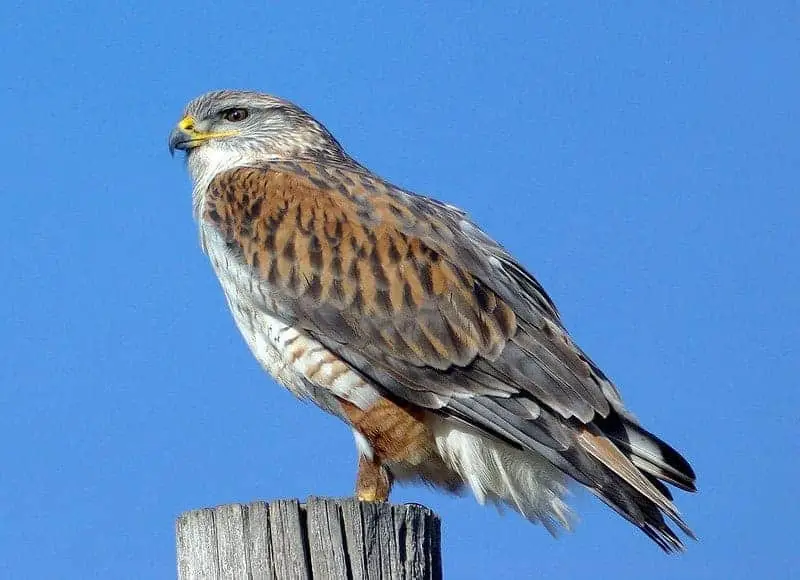
The term ‘ferruginous’ literally means ‘from iron’, though its name refers to the figurative meaning, which is ‘rust-colored’.
Morphs vary from gray and white, to all-white, to white-brown, but there is always a pattern of rust-colored feathers about its upper half.
These are usually on the shoulders and chest, spreading into the back area and part of the face and/or crown. This is one of the largest of the American hawks, and it is capable of hunting most prey typically sought by its peers.
Ferruginous hawks breed all across the central and western part of the state, migrating southeast to the lowlands only in winter. You can find some perched in the mountains like eagles, or at the top of the tallest pines overlooking prairies, marshes, and clearings between stretches of forest.
4. Swainson’s Hawk
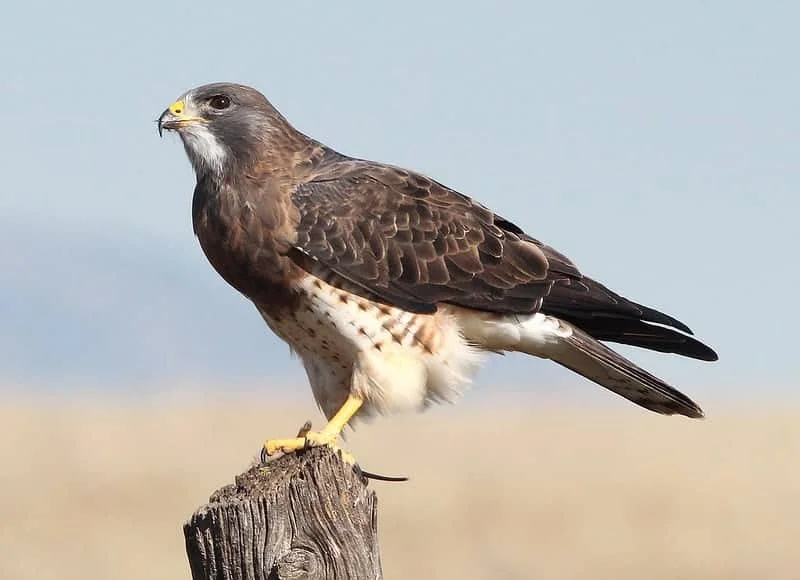
This is the most populous hawk in Wyoming, breeding and nesting throughout the state in the warm months, and relocating to its lowlands in winter.
Equally adept at striking at low-lying plains from the trees, leaping from bush to bush on the ground, or chasing its prey on foot, this is one of the most adaptable of all flying hunters in America.
They have varying colors, from all-grey with a brown-white belly; brown back with white underside; or speckled grey, brown, and white in sporadic patterns.
The apparent curvature of its wings during flight is closer to that of a smallish songbird, allowing much greater aerial maneuverability than gliders like the northern harrier or broad-winged hawk.
5. Sharp-shinned Hawk
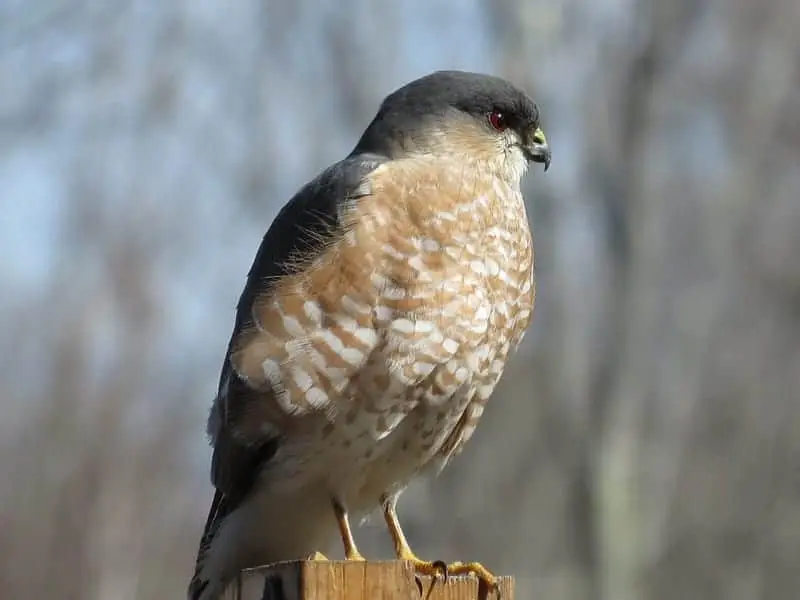
“Sharpies”, as the sharp-shinned hawk is called, are the smallest of the North American accipiter hawks. It resembles the larger Cooper’s hawk with its rust and white-colored underbelly and gray-blue outside.
Some morphs are completely different, with browns and whites seemingly at odds with the palette of the others. These are agile hunters who fly between the trees of tall firs seeking songbirds to snatch, and they mainly stay to themselves.
They can be lured by such songbirds to backyard feeders, however, and will stick around long enough after the hunt for the trip to be worth it.
6. Cooper’s Hawk
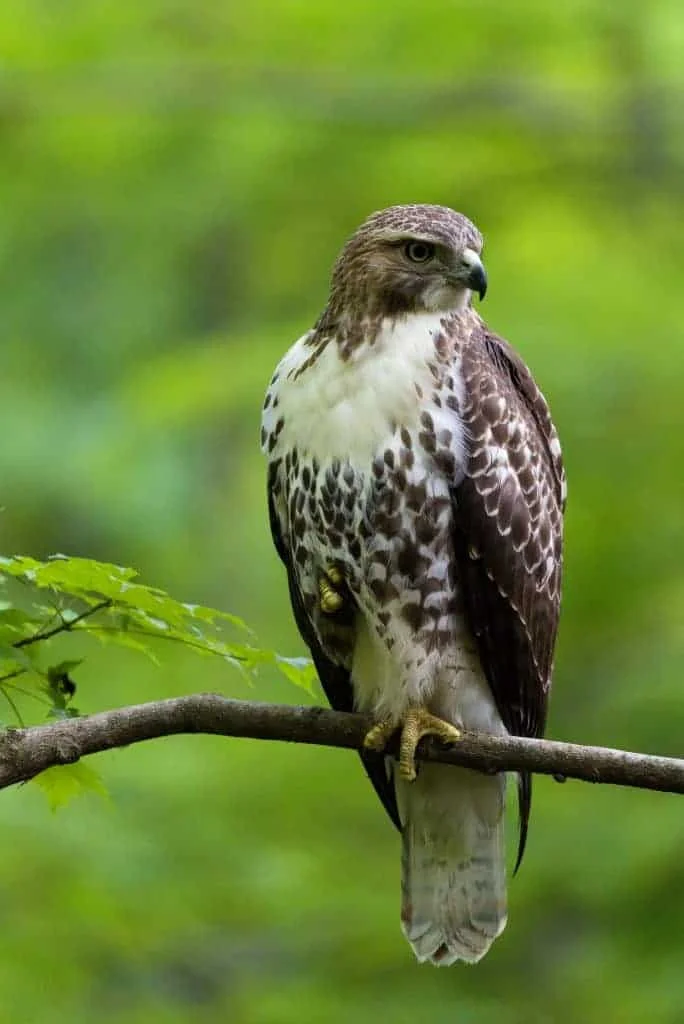
This is a North American breeder who loves the crisp elevation and tall pines of Wyoming, settling in to overwinter and breed when it’s warm.
As a result, Cooper’s are a staple in the area, going so far as to become a backyard pest in some areas for its tendency to attack songbirds as they attend feeders.
They breed in the northernmost part of the state, migrating to the southern “lowlands” when the cold sends its food into hiding. Visually, most morphs have rust and white striped underbelly and face, with a contrasting blue-gray ‘jacket’ (wings, cape, and crown).
They closely resemble the smaller sharp-shinned hawk, though a side-by-side comparison would reveal instantly that the Cooper’s is much longer and much heavier.
7. Northern Goshawk
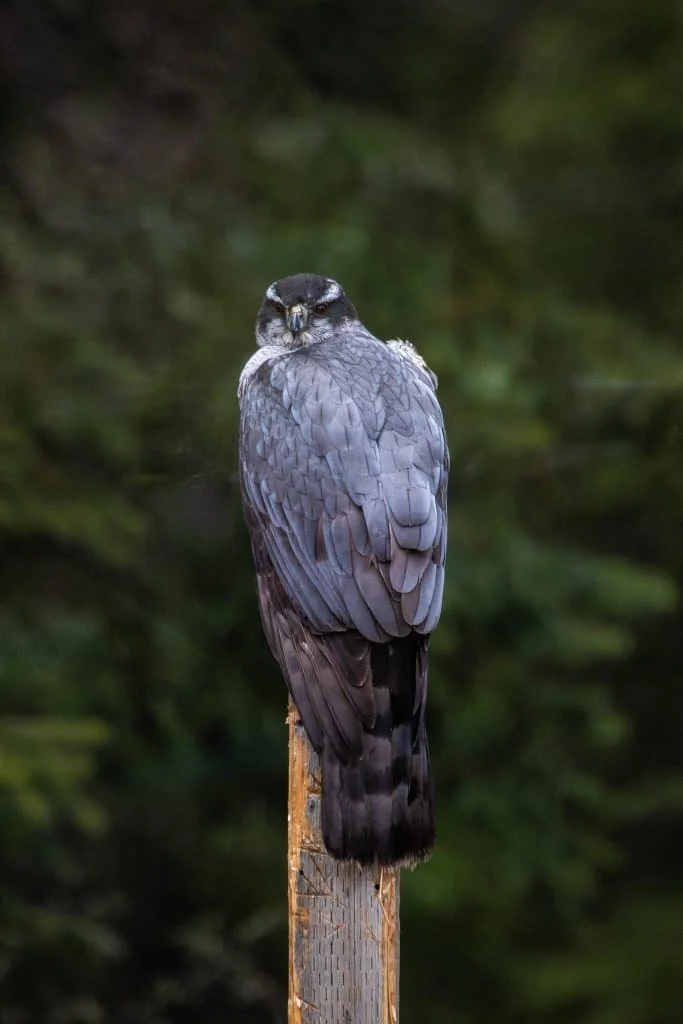
This agile arctic hunter is a frequent winter breeds exclusively in the northernmost part of Canada, venturing into Wyoming for winter hunting.
Goshawks are recognizable by their black ‘bandit’s mask’ beneath a white row of feathers resembling an eyebrow, giving the raptor a more expressive face than its stoic brethren.
They are usually combinations of gray and white, which might be dark or light gray in the rear and white underneath or mostly gray with a spot of white around the belly.
8. Rough-legged Hawk
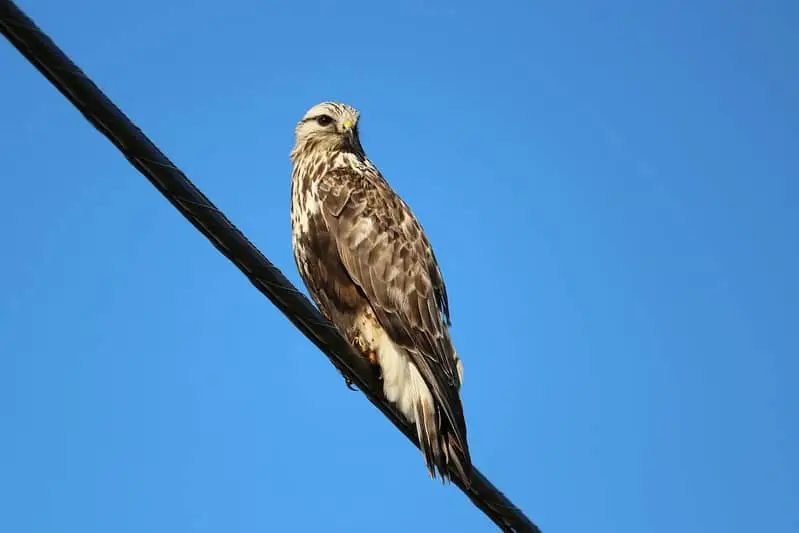
The name of this hawk comes from the feathers which extend from its base across its legs, giving them a ‘rough’ appearance.
These feathers protect the arctic bird’s limbs from the extreme cold of the Canadian north.
They hunt in the low grounds from atop their pine perches, swooping toward riverside plains and marshlands. Its coloring varies between brown and gray, or less commonly, white with gray or brown specks.
References
- https://www.audubon.org/field-guide/bird/northern-harrier
- https://www.audubon.org/field-guide/bird/swainsons-hawk
- https://www.audubon.org/field-guide/bird/ferruginous-hawk
- https://www.audubon.org/field-guide/bird/northern-goshawk
- https://www.audubon.org/field-guide/bird/sharp-shinned-hawk
- https://www.audubon.org/field-guide/bird/red-tailed-hawk

About Us
We are avid bird-watchers who recently retired, allowing us more time to travel the world. Fortunately, we have managed to visit numerous countries around Europe, Asia, and America. Watching and photographing birds has been a passion for many years and we are making the most of the extra time on our hands!
